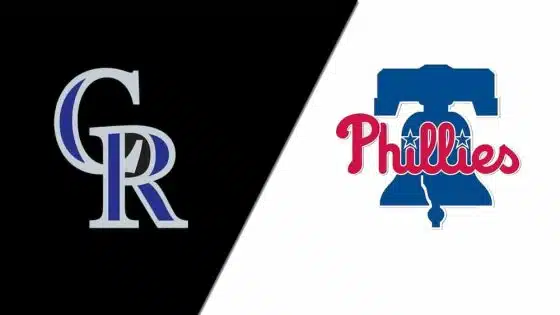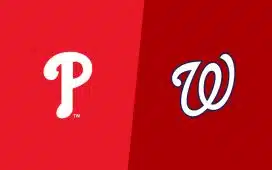The Beginning
It was the best of times when the Phillies opened their new ballpark on April 30, 1887. The national Sporting Life noted in its May 4 issue that despite the cold weather, the new grounds were among the very best in the major leagues. "The weather was quite cold and the wind very high, nevertheless people assembled to do honor to the occasion and to testify by their presence their appreciation of the exceeding liberality, enthusiastic faith in base ball…Philadelphia…[possesses]…a pleasure resort unequaled anywhere." The Sporting Life further explained that the stadium was built of brick and metal, among the first baseball stadiums in the nation to announce a club's geographic permanence compared to earlier stadiums which were made of wood. That year was the Phillies' most successful in their short five year history, finishing second in the National League, finishing 3.5 games behind the Detroit Wolverines who went on to defeat the St. Louis Browns in a 15 game World Series.
The stadium was once the crown jewel of the National League when it opened in 1887 but it soon fell on hard times with a fire in 1894 and several more safety incidents in the early twentieth century. Despite this, the club was, by and large, the main draw in town as the Athletics and their league, the American Association, were on the decline and folded following the 1890 season. The short-lived Philadelphia club of the Player's League jumped to the American Association after the former league dissolved following the 1890 season, and subsequently folded for good after the 1891 season when the American Association also collapsed.
The good times continued to roll by and large into the 20th century as the club posted several winning seasons and finished in the first division in 22 of 31 seasons between 1887 and 1917. Baker Bowl witnessed the teams narrative of near misses, middling finishes, and catastrophic seasons all the same. The stadium was ahead of it's time in construction but was eventually overshadowed by more aesthetically pleasing and larger parks – Ebbets Field, Braves Field, Fenway Park and Shibe Park to name a few. Unlike these sensible grounds, Baker Bowl was a relic of the 19th century and was wedged into an uncomfortable layout. Philadelphia baseball historian Rich Wescott detailed the park's construction and a few of it's quirks in his book Philadelphia's Old Ballparks. He explained that the grounds were originally a dump that were filled in with 100,000 loads of dirt and the street grid in which it was placed resulted in obscure, almost comical, field dimensions: 342 feet to left field, 408 feet to center field, and 281 feet to right field. Yes, a scant 281 feet to right field that was protected by a 40 foot high wall (eventually increased to 60 feet). By comparison, the Green Monster at Fenway Park is 37.5 feet high. Additionally, Wescott noted that the field was built next to the Reading Railroad across Broad Street and a train tunnel ran under center field resulting in that area being approximately 10 feet higher than home plate.
The quirky dimensions meant that fans were incredibly close to the action. Wescott recounted a story by Ed Doyle, another Philadelphia baseball historian who frequented the ballpark in the 1920s, in his book Philadelphia's Old Ballparks. "One of the great things about Baker Bowl was that you could sit in the stands and see the expressions on the guys' faces on the field…you could hear them yelling to each other; you could almost shake hands with them, you were so close."
Beginning in 1910, baseballs used in the major leagues incorporated a cork center creating a livelier ball. Philadelphia's small bandbox soon had trouble keeping the ball in the yard as home runs throughout the league escalated. Wescott explained that between 1911 and 1938, Phillies players led or tied the National League in home runs hit at home an astounding 19 times. The cork centered ball created a hitters paradise and a pitchers nightmare – the Phillies' team batting average in 1930 for example was a balmy .315 (second in the league behind the Giants' .319 average) but the pitching staff suffered significantly and posted a league worst 6.71 ERA (1.47 points higher than 7th place Pittsburgh).
In Perpetuity
The Phillies' park was too small even by 20th century deadball era standards but they were unable to vacate the grounds, extending Baker Bowl's lifespan by some 25 years. The first roadblock was that the club did not even own the grounds on which they played! When Al Reach and Colonel John Rogers sold the club to the Potter syndicate in 1903 the agreement was for the club alone while Reach and Rogers held the title on the ballpark and leased the grounds to the club. The Potter syndicate sold the club to a group of Philadelphians represented by sportswriter Horace Fogel in 1909. Although unsubstantiated, rumors swirled that Charles Murphy, owner of the Cubs, and Charles Taft, a Cincinnati newspaper man and brother of President Taft, financed the deal. Later that year, Fogel reportedly concocted a scheme to have Taft and Murphy purchase both the club and the grounds. Taft's wife purchased the grounds for $250,000 and the club for $350,000, bringing the total sale price to over $600,000. Fogel's remained as club president.
The reunification of club and grounds did not mean that Fogel was relieved of all financial responsibility. The Philadelphia Base Ball Association, over which Fogel presided, leased the ballpark from Taft for a period of 99 years at periodic escalating rates; $15,000 from 1910-1914, $17,500 from 1915-1919, and $20,000 for every year thereafter. The Association was also responsible for taxes, water rent, and other municipal charges made against the property. Finally, the Association was required to carry a $100,000 in fire insurance.
While the terms of the lease seem detrimental, the large sale of the club allowed Fogel to pursue premium talent such as Grover Cleveland Alexander, Erskine Mayer, Gavvy Cravath, and Dode Paskert, all of whom were key cogs in the machine that won the franchise's first National League pennant in 1915.
Horace Fogel eventually received a lifetime ban from baseball after waging a lengthy smear campaign against then National League president Thomas Lynch and National League umpires. The Taft-Murphy syndicate had had enough and sold their controlling interest in the club to a group led by William Locke and his cousin, William F. Baker (after whom Baker Bowl is named). The sale was for the club alone and ownership of the grounds stayed in Taft's hands.
Baker was financially conservative and sought to move the Phillies from their antique grounds in 1913 and move to nearby Shibe Park but he could not come to terms with John Shibe about concession profits. The July 7, 1938 Sporting News explained the state of the ballpark. "Baker Bowl was too small for real major league ball. Its grandstand and bleachers could not accommodate big league crowds and the playing field was tragic…so Baker tried to move in at Shibe Park, meanwhile paying the $25,000 [incorrect figure] rental on the Phillies park…in 1913." Shibe, owner of the Athletics, insisted that concessions were to be controlled by the A's. The two parties did not agree so a deal to move the Phillies to Shibe Park as tenants in 1913 was not struck.
Without an agreement to move the Phillies to Shibe Park, Philadelphia's National League team was caged in Baker Bowl. The money gained from the sale of the club and grounds withered and by 1920, the club was again in the second division. The dilapidated park continued to deteriorate; a section of the grandstands collapsed in 1927. By the time Baker Bowl celebrated its Golden Anniversary it was an out-of-place relic of a bygone era. It was the only ballpark in the majors where the PA announcer addressed the fans with a megaphone near home plate because the club never added an electronic PA system to the stadium. No thought was given to adding electric lights to the stadium either despite several other clubs doing so.
Finally, in June 1938 the Athletics and Phillies came to an agreement for the Phillies to move to Shibe Park. Both sides agreed that concession profits would be controlled by whichever club was using the grounds. Charles Murphy, who bought the Mrs. Taft's portion of the Baker Bowl stake, was dead by 1938 but his 16 heirs consented to the Phillies' move to Shibe Park with the caveat that the club still paid its lease until a substantial payment was made to release them from their perpetual lease. Although the club had to pay two leases for a period of time, the news media, club, and fans all agreed that the move was long overdue. The Sporting News reported in its July 7, 1938 issue that the Phillies "rejoiced when the news was announced that the Phillies had a new home." It continued, "The public indorsed [sic] the move…to tell the blunt truth, there were many fans who refused to go to the Phillies' park because they were in actual fear of the stands collapsing."
The Final Game and Aftermath
The Phillies began their final half season at Baker Bowl wearing very obscure uniforms. The club's primary colors dating back to 1883 were red and blue, with occasional departures to black and even green! But 1938 was different because it was the tercentenary anniversary of the Swedish settlement of the Philadelphia region in 1638. Residue of the Swedes were few but could be seen in the city's blue and yellow flag. The club decided to use the color scheme for both home and away uniforms.
Jim Henry shown in the Phillies' 1938 away uniform (used with permission from Baseball-Birthdays.com)
The Phils played their last game at the ancient Baker Bowl eighty years ago on June 30, 1938. The Philadelphia Inquirer described the affair metaphorically in its July 1 recap:
"Yesterday they [the Phillies] said farewell to the old orchard, packed their bags, sang Auld Lang Syne, and, in keeping with the traditions of the Phils of recent years, took a 14-1 beating at the hands of the New York Giants. It isn't a pleasant thing to talk about – no massacre ever is – and the Phils' last stand was comparable to that made by General Custer against the Indains."
Action shot of the Phillies at bat during the last game at Baker Bowl
(Courtesy of the Special Collections Research Center. Temple University. Philadelphia, PA)
With the major tenant gone, Baker Bowl was repurposed to an automobile race track, an ice skating rink, and a used car lot. At the end, all that remained of the park's construction were its walls In 1950, with the Phillies in their first serious pennant chase since World War I, Baker Bowl's 15th Street wall collapsed during a storm and the rest was soon demolished. The property was sold in 1956 for $400,000 and the lot was eventually carved up for commercial uses. In 2000, a Pennsylvania Historical Marker was dedicated to Baker Bowl and currently stands at Broad Street and Lehigh Avenue. The marker is one of four such markers- Shibe Park (1997), Baker Bowl (2000), Veterans Stadium (2005), and the Jefferson Street Ballparks (2017) – dedicated to Philadelphia baseball parks.
Baker Bowl's collapsed 15th Street wall in 1950.
(Courtesy of the Special Collections Research Center. Temple University. Philadelphia, PA)





